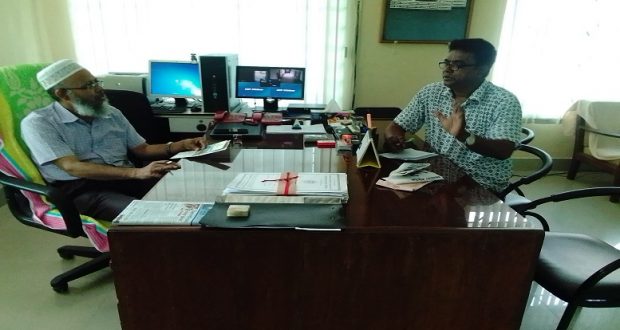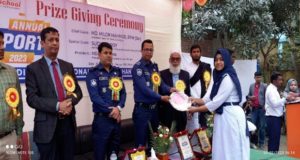The Ministry of Fisheries and Livestock has banned 22 days of catching of the hilsa in 8 tracts in the country including Chandpur from October 9 to Oct 30 . This was stated in a notification issued by the ministry on Sunday (Sep 8).
After the inter-ministerial meeting in the conference room of the Ministry of Fisheries and Livestock at the secretariat, State Minister Ashraf Ali Khan Khasru said, “At this time the mother lays eggs. At this time the egg lays 80% of the egg. And the eggs lay mainly in fresh water. Therefore, 18 days before the full moon of Ashwin and 4 days after the full moon, 22 days will be completely fully prohibited in all the districts of the country where the hilsa is found, including coastal areas and river estates. ”
In addition, the collection, transportation, storage, marketing, sale and sale of hilsa will also be prohibited. This time the administration and taskforce will be in a tougher position than in the past.
In order to protect the mother hilsa, Padma-Meghna of Chandpur, along with the area of 7,000 sq km. The government has announced three sanctuaries in the river area. It has an area of 432 km. The Ministry of Fisheries and Livestock has originally banned the release of egg-laying eggs.
At this time, the collection of all kinds of fish, jatka, and jatka hilsa, including sale, marketing, storage or marketing of fish, is prohibited.
On Monday (Sep 18 ) gave a brief interview to Chief Scientific Officer, Dr. Anisur Rahman, who has been involved with the hilsa research for four years at Chandpur Fisheries Research Institute, River Kendra Chandpur.
Dr. Anisur Rahman, Chief Scientific Officer of Fisheries Research Center, Chandpur, who has been associated with the Hilsa study for four years in Chandpur for 22 days from October 9 to October 30, said, “ the mother was prohibited from hatching an egg . The ministry decided to offer 22 days from 9 Ooct to this year. Which was done because of the research findings. As a result, the production of hilsa has increased steadily.
He added, “It is possible that task force, journalists and fisheries department officials, public representatives and concerned fishermen have also played a significant role in this regard, including Chandpur district. Thank you to everyone involved for this. ”
Responding to the question of what steps were being taken to conserve and increase the production of hilsa this year, Chief Scientific Officer Dr Anisur Rahman said, “According to the decision of the fisheries department, the task force is in the area where the hilsa operates , Coastguards, members of the Naval and Air Force, local public representatives and media outlets in some of the Hilsa areas Mobile court will be conducted during the blockade with the involvement of the people. It has been decided that all the sanctuaries of the country will not be exempted during the blockade.
He added, “The result of increasing the production, collection and multiplication of hilsa of last year, increasing the number and volume of sanctuaries. Besides Meghna and Padma, the hilsa has now resumed its journey to Jamuna, Madhumati, Chitra, Nabaganga, Kushiyara and Ariyal Khan. At the moment of laying eggs daily, the hilsa is able to roam about 12 km. During this time, researchers from FRI will conduct research and observation activities in every sanctuary in the country.
According to the data of the Department of Fisheries, the country where the production of hilsa was 1 lakh 99 thousand 32 Mt in the financial year 2012-13. The production of hilsa has increased steadily due to various measures taken by the government including banning of jatka,.
According to fisheries scientists, Bangladesh Fisheries Research Institute, Nadi Kendra Chandpur has continuously conducted research to set up the sixth sanctuary for producing hilsa. Jatka abundance is being observed in the rivers of Meghna branch in Barisal Sadar and Hizla-Mehendiganj upazila of Barisal.
All quality levels are favorable for river biodiversity. In the same region, an abundance of plankton can be observed which confirms the food abundance of fish. On the basis of the overall results of the study, it can be ensured that the area is favorable for Jatka or Hilsa, considering the abundance of Jataka, the quality of the river water and the plankton of the river water.
Increasing the production of hilsa is essential to increase production and biodiversity by maintaining tolerant production by protecting the egg species from the accumulation of hilsa and jatka at high levels. The sanctuary will play an important role in enriching more hilsa along the rivers of Barisal region. Even due to geographical location, the area is 12 km. Deserves to be declared as a sanctuary.
In this context, the recommendation for the construction of the declaration and establishment of the area as the sixth sanctuary was recommended and it came to a stage of implementation. One of the sanctuaries is a factory producing a silver hilsa .
Abdul Ghoni, Sep 25 , 2019
 Chandpur Times Top Newspaper in Chandpur
Chandpur Times Top Newspaper in Chandpur



